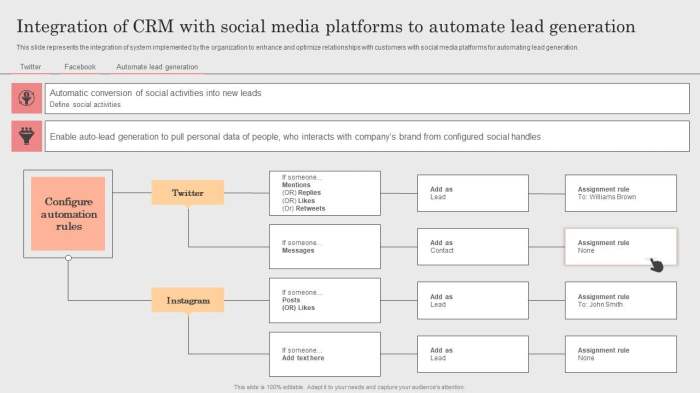CRM with MLS integration stands as a transformative solution for real estate professionals seeking to streamline their operations and enhance customer relationships. By marrying Customer Relationship Management (CRM) systems with Multiple Listing Services (MLS), agents gain a comprehensive tool that not only simplifies listing management but also improves client interactions. This integration is pivotal in today’s fast-paced real estate market, where efficiency and customer satisfaction are paramount.
Understanding the synergy between CRM and MLS is essential for real estate businesses aiming to leverage technology to enhance their service offerings. The integration provides a robust framework allowing agents to manage leads, track client interactions, and access comprehensive property data all in one place, thus fostering a more organized and responsive business environment.
Understanding CRM with MLS Integration
Customer Relationship Management (CRM) and Multiple Listing Services (MLS) are two critical components in the real estate sector. CRM systems help professionals manage interactions with current and potential clients, streamlining processes and enhancing customer service. Conversely, MLS provides a centralized database where real estate agents can list properties and access listings from other brokers, facilitating collaboration and visibility in the market.
Integrating CRM with MLS transforms the operational dynamics of real estate professionals by consolidating client management and property listing functionalities. This integration allows agents to easily access property data and client interactions in one platform, significantly improving their efficiency and effectiveness. The benefits of using a CRM with MLS integration include enhanced lead tracking, improved customer service, and data-driven decision-making that can lead to increased sales.
Key Features of CRM with MLS Integration

The integration of CRM with MLS comes with several essential features that significantly enhance user experience and operational efficiency. Notably, these features include:
- Automated Data Syncing: Ensures that property listings are always up-to-date without manual input.
- Lead Management: Tracks potential clients and their interactions with properties in real-time.
- Enhanced Reporting Tools: Provides insights into sales performance and client preferences, aiding strategic planning.
- Comprehensive Marketing Solutions: Integrates marketing tools to promote listings effectively across various channels.
A comparison of standard CRM features versus those enhanced by MLS integration reveals several key differences:
| Feature | Standard CRM | CRM with MLS Integration |
|---|---|---|
| Data Entry | Manual | Automated |
| Lead Tracking | Basic | Advanced with property interest tracking |
| Reporting | General | Detailed with MLS data insights |
| Marketing | Standard tools | Integrated marketing solutions |
Implementation Strategies for CRM with MLS Integration
The process of integrating a CRM system with an MLS can be intricate, but following a step-by-step strategy can streamline the transition. The steps typically include:
- Assess current CRM and MLS systems for compatibility.
- Plan the integration process, defining clear objectives and expected outcomes.
- Ensure data cleanliness by verifying and cleaning existing data.
- Implement the integration with the help of technical experts, ensuring proper configuration.
- Test the integration extensively to identify and fix any issues.
- Train users on the new system to facilitate adoption.
Best practices for a smooth transition involve consistent communication among stakeholders, thorough documentation of processes, and setting realistic timelines for completion. A checklist of critical requirements for successful integration includes:
- Compatibility assessment of existing systems
- Data quality verification
- Technical support availability
- User training sessions
- Post-integration support plan
Case Studies of Successful CRM with MLS Integrations
Numerous real estate businesses have effectively implemented CRM with MLS integration, leading to significant improvements in their operations. For instance, a mid-sized real estate agency in California adopted this integration and reported a 30% increase in lead conversion rates within six months.
Another example is a large brokerage that utilized integrated CRM to streamline their marketing campaigns, resulting in a 25% boost in client engagement. These successful integrations have demonstrated that enhanced data accessibility and improved communication can lead to better relationship management and higher sales figures.
Lessons learned from these case studies highlight the importance of thorough planning, user training, and ongoing support during and after the integration process to ensure sustained success.
Challenges and Solutions in CRM with MLS Integration
While integrating CRM and MLS systems offers numerous benefits, several challenges may arise. Common challenges include:
- Data Migration Issues: Difficulty in transferring data from one system to another.
- User Resistance: Employees may be hesitant to adopt new technologies.
- Technical Glitches: Compatibility issues may arise during integration.
To address these challenges, consider the following solutions:
- Conduct thorough data audits before migration.
- Engage users early in the process to gather feedback and address concerns.
- Work with experienced IT professionals to ensure a smooth technical integration.
Future Trends in CRM with MLS Integration

As technology continues to evolve, emerging technologies such as artificial intelligence (AI) and machine learning are expected to influence CRM and MLS integration significantly. These technologies can provide more personalized experiences for clients, enhance predictive analytics, and automate various processes, making operations more efficient.
Trends in user expectations are shifting towards more intuitive interfaces and seamless experiences across devices. As clients increasingly demand real-time information and personalized interactions, CRM systems with MLS integration will need to adapt accordingly.
Predictions for the evolution of CRM systems indicate a stronger focus on data-driven decision-making, enhanced automation capabilities, and deeper integration with emerging technologies, ensuring that real estate professionals can meet the changing landscape of the industry.
Conclusion: CRM With MLS Integration

In conclusion, embracing CRM with MLS integration is not just a trend; it’s a strategic move that can lead to increased efficiency and improved client satisfaction in the real estate industry. By learning from successful implementations and addressing potential challenges, real estate professionals can position themselves for future growth and success. As technology continues to evolve, the ways in which CRM and MLS can work together will undoubtedly offer even more innovative solutions to meet the demands of an ever-changing market.
